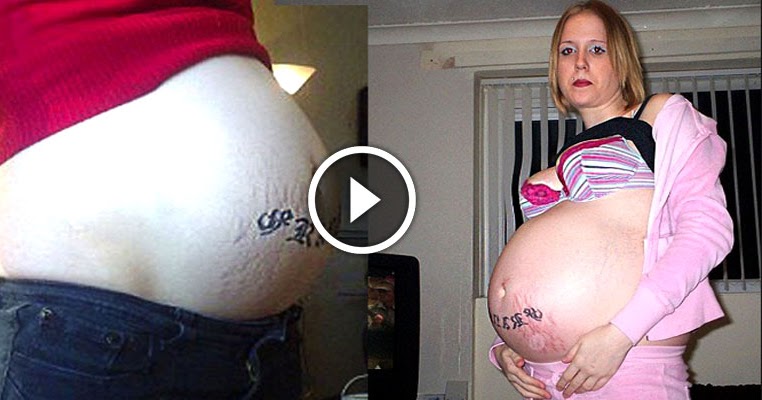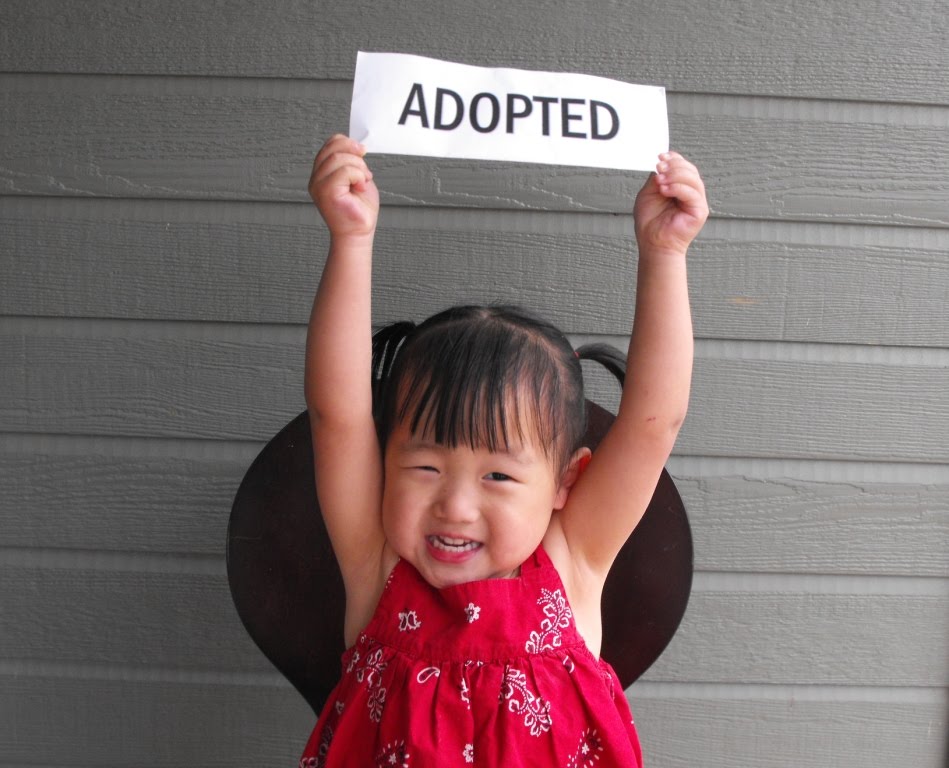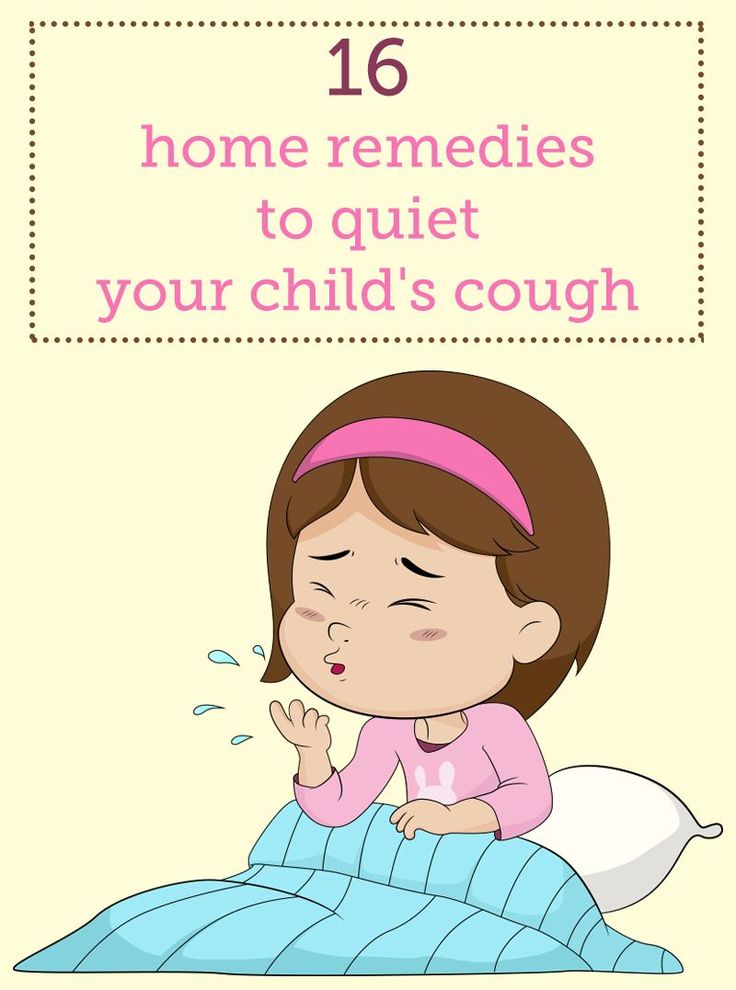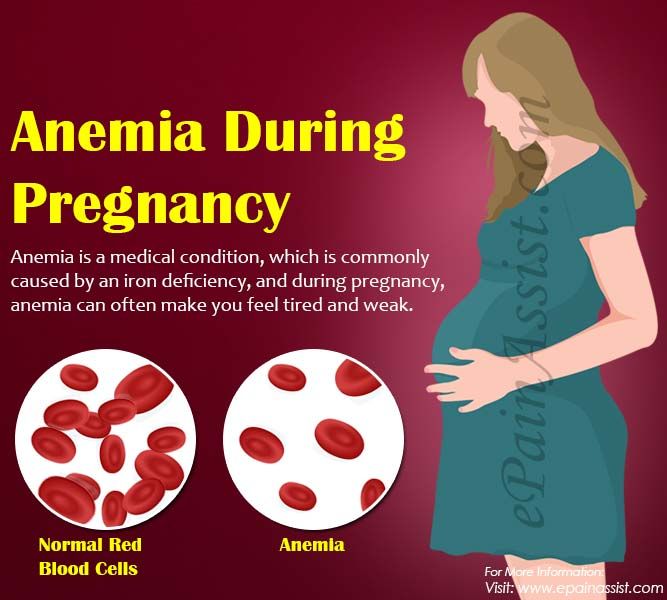Understanding baby cry
Decoding Baby Crying (8 Types of Crying You Might Hear)
Did you know there are several types of baby cries? We all know how babies can cry — during the first few weeks and months, that’s all you hear.
What if we told you there might be a way to understand what your baby is trying to communicate? Decoding baby crying sounds like a job for a super nanny, but it’s not as hard as it seems. By the end of our post, you will know exactly what your baby’s cry means and how to soothe them — and your ears.
Table of Contents
- Types of Baby Cries and What They Mean
- Mystery Cries and What to Do
- The Don’ts of Baby Crying
- Tips for Surviving a Crying Baby
- Hang in There
Types of Baby Cries and What They Mean
Up until their first words, babies use crying as a way to communicate. Did you know that crying isn’t always a bad thing?
Sometimes, it’s merely a call for attention. However, this is usually not until the second or third month (1).
Here are eight different cries and how to soothe them:
1. Tired
During the first six months, babies sleep a lot — unfortunately, it’s in irregular patterns, and they often confuse daytime with nighttime. Sleep is crucial for an infant as it helps them develop. As a newborn, your baby may sleep a total of ten to 18 hours every day (2).
What to Listen for
Every baby is different, but try to listen for a helpless, breathy, almost like an “owh” sound. Look for a cry that’s easily soothed with comfort.
What to Do
Try to help your baby sleep better, especially during the night. An excellent way to do that is to initiate sleep before they get overtired. Watch for clues that your baby is giving you such as yawning, drowsiness, and fussiness (3).
Experts also recommend you observe your baby’s sleep patterns, no matter how irregular they may seem. Your little one is likely to get tired around the same time every day. Before they fall asleep, place them in their crib to help them sleep on their own.
Your little one is likely to get tired around the same time every day. Before they fall asleep, place them in their crib to help them sleep on their own.
If your baby is nearing overtiredness, the area around the eyes might become red, and they may rub their eyes. They can also seem restless — your baby’s eyes might be closed, but they can’t sleep.
In such cases, swaddling is a good solution, as it provides some extra comfort. It’s recommended to do a tight swaddle, keeping your little one snug.
Swaddling doesn’t work on all babies, though — my little one hated it. Sometimes, your baby just needs to be left alone. Try to place them in their crib and observe them — perhaps sing a lullaby or use white noise.
2. Overstimulated
Babies love attention and comfort, but it gets overwhelming if you overdo it. Babies can quickly get overstimulated by being in a room full of people trying to hold them or making noise.
What to Listen for
The overstimulated cry is generally quite low toned and not as loud. It can quickly turn into shrieking and is not easily soothed. Listen for a whiny, almost fussy cry.
It can quickly turn into shrieking and is not easily soothed. Listen for a whiny, almost fussy cry.
What to Do
An overstimulated baby needs some quiet. Watch out for the early cues such as fussing, turning their head away, or an angry face.
Try removing or stopping the source of stimulation. If your little one is watching an iPad, turn it off — such devices can overstimulate a baby within minutes and aren’t recommended.
The AAP has updated its recommendation on screen time usage for infants and toddlers. Aside from FaceTime or Skype social interactions, screened devices are not recommended under the age of 2 (4)
It may seem as if your little one really enjoys watching videos and is very adept at figuring out how to use these devices. This does not mean that doing so is beneficial. In clinical practice, I support the AAP recommendations but understand that complete avoidance is not always practical.
My suggestion to parents is to reserve screen time for situations such as plane rides, long car rides, or restaurants where fun distractions are often necessary.
Editor's Note:
Dr. Leah Alexander, MD, FAAP
It can be a bit more challenging if your little one is overwhelmed while you’re out and about. On busy Saturday mornings at the grocery store, an infant can swiftly become overstimulated. Try to find a quiet area, or if possible, go outside to your car where no people or noises are around.
If it happens at home, perhaps after play or too much interaction, try white noise. This can be a whirring fan, noise machine, or your shushing sounds. What helped me was the vacuum cleaner — my little one would calm down right away.
You can try your own technique, such as running warm water over their hands and feet.
3. Bored
Although babies don’t do much, they do experience boredom when left alone for too long.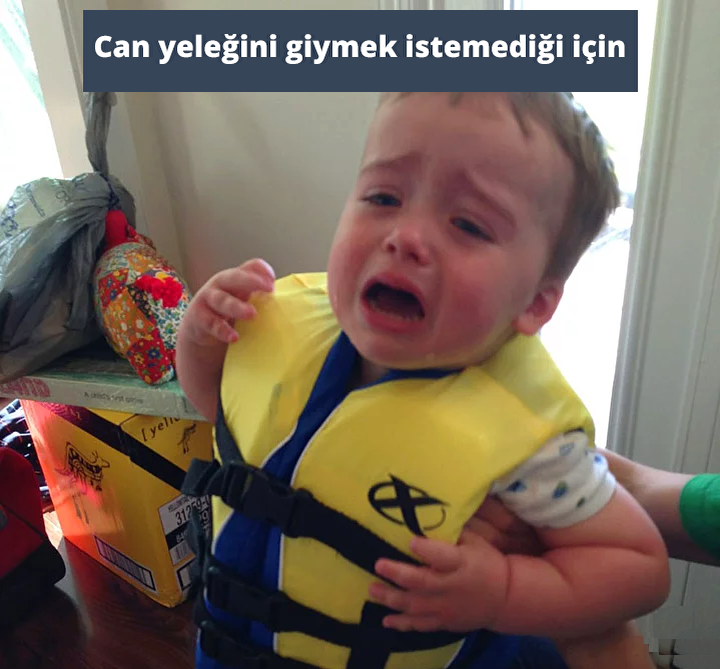 A bored cry isn’t necessarily a bad one — it’s more of wailing for attention, saying they’re lonely.
A bored cry isn’t necessarily a bad one — it’s more of wailing for attention, saying they’re lonely.
What to Listen for
A bored cry can sound similar to the overstimulated one — it’s low toned and may come off as whiny. It’s simple to soothe, and it can even turn into laughter once your baby is old enough.
What to Do
When your baby is bored, your first instinct is likely to grab their favorite teddy or sing a song. However, some experts recommend you give your baby some time to adapt before responding.
While you’re giving your baby time to cope, you’re teaching them how to self-soothe. A bored baby can become intrigued by something in the crib, their hands, and even feet. So if you don’t rush to their side, don’t worry, it doesn’t mean you’re being cruel or unsympathetic (5).
4. Hungry
When hunger calls, your baby will cry. During the first months, this becomes the cry you recognize even in your sleep.
What to Listen for
The “I am hungry” cry is distinctive. It has a desperate tone that’s repeated until it’s answered. Listen for a rhythmic, high-pitched squeal, and a “neh” sound.
It has a desperate tone that’s repeated until it’s answered. Listen for a rhythmic, high-pitched squeal, and a “neh” sound.
What to Do
The only thing to do is feed your baby. Before your baby resorts to their hunger cry, they usually send signals. These can include turning toward the breast, smacking their lips, or fussing.
You can also calculate how long it’s been since the last feeding — newborns usually eat every two to three hours (6). If you’re in doubt about the cry, offer your breast or a bottle — if it’s hunger, they won’t say no.
However, if you’re using formula, ensure you’re not overfeeding — avoid offering the bottle before the two-hour mark. If you think your baby may be going through a growth spurt and might need extra formula, mix only two ounces and see if that helps the situation.
5. Uncomfortable
Feeling too warm or cold, having a burp stuck in your belly, or wearing a dirty diaper can make a baby pretty uncomfortable.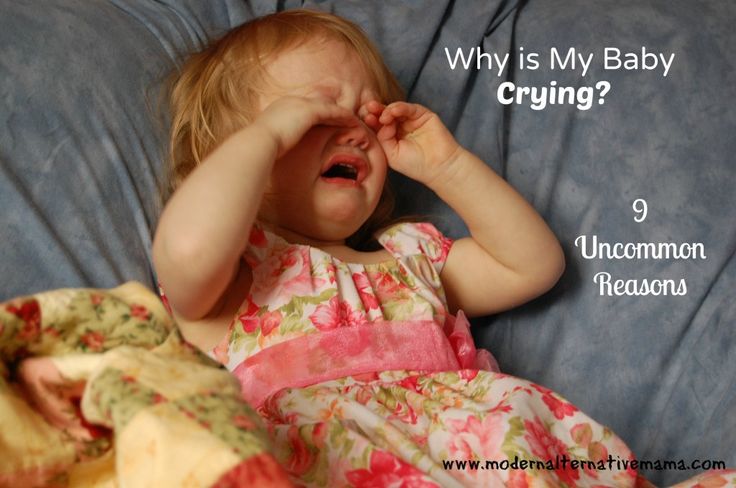 This is another cry that will be likely to wake you up for the sixth time during the night.
This is another cry that will be likely to wake you up for the sixth time during the night.
[edit0rs-note name=”leah”]Infants don’t need multiple layers of clothing to stay warm at night. In most cases, a simple onesie is all that is needed. If you check on your baby, and the hands and feet feel very warm or almost look red, he or she is probably too warm. Also, keeping an infant too warm increases the risk of SIDS (7).[/editors-note]
What to Listen for
An uncomfortable cry is whiny and high-pitched, almost like the sound is coming from the nose. It can be distressing to hear, especially if it happens while driving and you can’t get to your little one right away. Luckily, it’s pretty straightforward to solve.
What to Do
The first thing to do is to check the diaper. If it has been a while since the last change, try rebooting with a fresh one.
If you’ve finished feeding, and your baby cries again, it’s likely to be a burp looking for an escape route (8). Try burping them, and the crying should stop.
Try burping them, and the crying should stop.
In practice, I emphasize the importance of burping. When infants feed, especially from a bottle, they tend to swallow air which can accumulate in the stomach. This also occurs when babies feed very quickly. If stomach air is not expelled in a burp, it passes to the intestines, resulting in abdominal distension and discomfort.
There are two burping positions that I recommend: holding the infant over a shoulder or placing him or her belly down over your lap. You may have noticed that nurses held your baby in an upright position while supporting the chin to burp in the newborn nursery. Unfortunately, this is not the most effective position. The outer belly muscles are “crunched” in this position, and less air is expelled. This can result in a very fussy baby.
Editor's Note:
Dr. Leah Alexander, MD, FAAP
6. Pain
Pain is a difficult one — although it’s distinctive, it can be scary to hear. Most of the time, it’s due to gas, or your baby might be constipated.
What to Listen for
The pain cry is eerie — high-pitched, like grating and piercing. Your baby may make an “eairh” sound as if they’re trying to pass a bowel movement. It is easy to distinguish because the cry sounds urgent and distressed.
What to Do
It might seem like a cry worthy of a visit to the emergency room when you’re a new parent. However, that’s not likely.
A pacifier works wonders to help your baby pass gas. The sucking reflex involved helps to calm your little one, which in turn, helps their intestines push the blockage along.
If your baby doesn’t want to take a pacifier, try to burp them or otherwise soothe them until they find relief. Gas is essentially a trapped burp which has traveled to the stomach.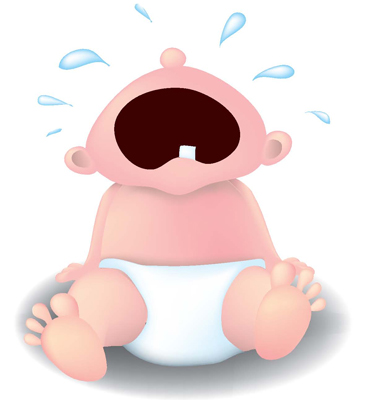 To avoid this, burp your baby after every feeding.
To avoid this, burp your baby after every feeding.
There are other reasons to hear this type of cry. Occasionally, a piece of hair gets caught around a toe, called a hair tourniquet, resulting in swelling and pain. If you have tried burping, and the crying hasn’t improved, check the toes. If there is lots of swelling, you may need to take your baby to a doctor for removal of the hair (9).
Gastroesophageal Reflux Disease or GERD is a common reason for a “pain” cry. Infants with this condition cry during feedings, often pushing away from the breast or bottle. They have frequent spit-ups associated with crying, and consistently cry when lying in a supine position. You may even notice arching of the back. Bedtime may become very difficult because the baby will cry every time he or she is placed in the crib. If you feel your little one is experiencing these symptoms, consult with a doctor (10).
7. Colic
Colic is defined as a baby who cries continuously for more than three hours. The exact cause remains a bit of a mystery to this day.
The exact cause remains a bit of a mystery to this day.
It was long thought that it was due to an intolerance to cow’s milk. However, breastfed babies get colic too (11).
Colic can be very frustrating for parents, but it is important to know that this phase will pass. Most infants “outgrow” colic by 3 months of age.
What to Listen for
A colicky cry will sound similar to the pain cry, but with higher intensity. Listen for screams and wails, followed by strained movements: pushing as if to pass stool or pulling the legs up toward the belly.
What to Do
It’s not easy dealing with a colicky baby due to the crying. Fortunately, there are ways to soothe them. Try the following:
- Swaddle: Wrap them like a snug burrito with arms crossed — this should calm them. It gives a feeling of security.
- Backrub: Place your baby on their belly across your lap. Then give them a gentle back rub. This will soothe and relieve some of the pain.

- Walk or rock: Sometimes, movement is all it takes. If possible, walk around your home or sit with your little one in a rocking chair.
- Swing: This is an ideal solution if you’re feeling tired or overwhelmed. Place your baby in their swing or vibrating seat, and let the device calm them.
- White noise: Try the soothing sounds of a washer or dryer — it might be enough to calm them.
Keep In Mind
Parents can sometimes become overwhelmed during this colicky phase. It is important to seek help from others and to take breaks (12).
8. Sick
The sick cry can break a thousand hearts, and it can be frustrating for parents who don’t know what’s wrong.
What to Listen for
Listen for soft, low-pitched whimpers, almost like there’s no energy to make a louder sound. If pain is associated with an illness such as an ear infection, the cry can be high-pitched.
What to Do
Try your best to soothe your baby, but watch out for symptoms such as fever, vomiting, constipation or diarrhea, and rashes. If your baby shows any of these signs or is difficult to console, call the doctor for treatment options.
If your baby shows any of these signs or is difficult to console, call the doctor for treatment options.
Mystery Cries and What to Do
It’s essential to remember that babies crying is normal — it’s their way to express themselves. Newborn babies cry for an average of two hours every day. Then from a few weeks old to around six weeks, the amount increases to three hours (13).
This crying is spread throughout the day, and your baby may cry more than this. Some of these cries are nearly impossible to decode — and as long as your baby is healthy and otherwise happy, it’s completely normal.
Crying sessions are commonplace during the evening. It’s the time where everyone is naturally tired and exhausted from the day’s activities. If you’re breastfeeding, your milk supply may be running low as well, which can lead to hunger cries.
Sometimes a good cry is what your baby needs to unwind. It’s not a bad thing to leave them for a couple of minutes. Experts suggest it’s beneficial, and may even help some with sleeping (14).![]()
You could try offering them milk if it’s around feeding time. If not, try changing their diaper or even clothes. My little one would calm down after a warm bath.
The Don’ts of Baby Crying
It’s not easy seeing your baby cry, but during the first months, it seems like that’s all they do. It can be frustrating, and even with the best intentions, it’s easy to react in improper ways. Here are some things you should not do when your baby is crying:
1. Don’t Panic
You’re not alone in feeling distressed or helpless when your baby cries and won’t stop, or cries for the 100th time that day. Try your best to stay calm and not panic. If you’re starting to cry too, getting frustrated, or even a little agitated, it can spook your baby further (15).
If you need a timeout for a minute or two, put the baby in a safe place and take a breather (16).
2. Don’t Ignore
Without contradicting ourselves, it’s crucial to find the balance between ignoring and taking a breather. It’s okay to take a minute for yourself, but you should never ignore your baby’s calls, especially with infants.
It’s okay to take a minute for yourself, but you should never ignore your baby’s calls, especially with infants.
When your baby begins to cry, try to respond as quickly as possible, especially if you know there is a reason for it. They may be waking up from a nap and need food and a diaper change. By waiting, the hunger cry can swiftly escalate into distress or anger, making it worse.
3. Don’t Punish
A timeout doesn’t work on a baby the same way it does on an older kid. Your baby isn’t being demanding or having tantrums — they’re merely communicating distress and feelings. Try to keep your cool, and remind yourself that punishment doesn’t work.
4. Don’t Get Angry
Your baby doesn’t understand it should stop crying when mom gets angry. Instead, it will make them cry more, particularly if you shout at them. Take a deep breath and tell yourself that anger doesn’t solve the issue.
5. Never Shake Your Baby
Spending a lot of time with a crying baby can be heart wrenching and distressing. It’s fine to try and distract your baby with play. However, never shake your baby, either out of playfulness or anger.
It’s fine to try and distract your baby with play. However, never shake your baby, either out of playfulness or anger.
Shaken Baby Syndrome
Because of their feeble neck muscles, shaking a baby can destroy their brain cells and decrease oxygen supply to the brain. This can lead to blindness, intellectual disabilities, cerebral palsy, and seizures. In severe cases, your baby could die from complications (17).
Tips for Surviving a Crying Baby
Becoming a parent can be one of the best experiences in life, but it’s also one of the toughest jobs. The first months are overwhelming. Between crying spells, changing diapers, and feeding, it’s not easy getting time to breathe. Research shows that excessive crying can take a psychological toll on parents (18).
However, it’s important to take time for yourself (19). Here are some tips to help you through some of the crying spells.
1. Take a Break
You don’t have to be the super mom or dad who never leaves their baby’s side. When feeling tired or overcome, it’s a good idea to let someone else take your little one. This could be your partner, family member, or another caregiver — as long as they’re responsible and trusted.
When feeling tired or overcome, it’s a good idea to let someone else take your little one. This could be your partner, family member, or another caregiver — as long as they’re responsible and trusted.
Taking a break, such as going outside by yourself, relaxing in a bath, or even having an undisrupted nap, can do wonders. It doesn’t mean you’re neglecting your baby, and may also make you a better parent.
2. Remember to Breathe
I clearly remember during some of my baby’s longer crying spells asking myself if it would ever end. They seem inconsolable, but what helped me was constant reminders that the crying would stop.
If colic is what’s causing the crying, remember that it goes away around three months of age. This may sound like a lot, but time flies by with a newborn.
3. Remember Yourself
Taking care of yourself is just as important as caring for your baby. Eat a healthy diet to restore your energy, and try to do some exercise once in a while. You don’t have to do rigorous running — a brisk stroll with your baby is all you need.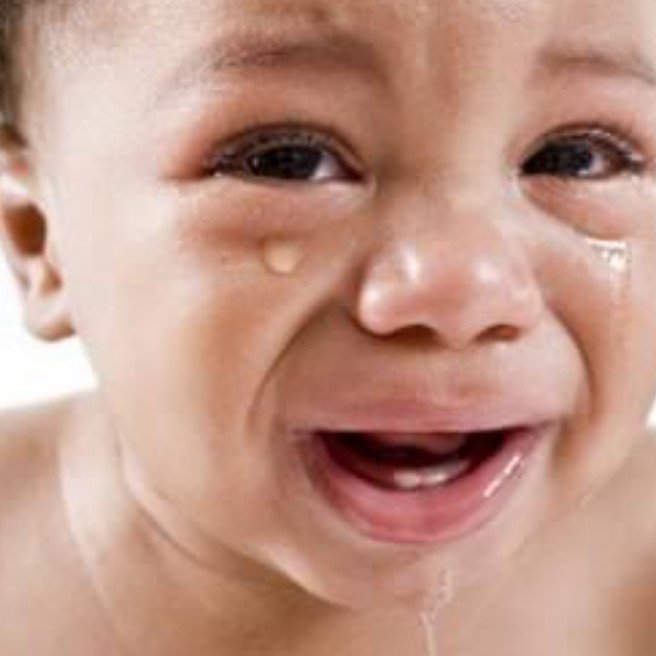
Exercising or taking walks can also enhance your mood and overall well being. It can help you deal with the crying spells (20).
4. Call for Help
If it’s getting too upsetting, don’t hesitate to call for help. You can contact your doctor, a support group, a therapist, or even a call service. Talking with someone who listens always helps, especially if you’re a single parent.
Hang in There
Decoding baby crying is an excellent way to respond faster to their needs and stop the tears. It’s fairly easy when you know what to listen for.
When babies cry, it can get overwhelming — keep in mind that it won’t last forever, and try to stay calm. Take a break when you need to and prioritize your own needs once in a while when possible.
Feedback: Was This Article Helpful?
Thank You For Your Feedback!
Thank You For Your Feedback!
What Did You Like?
What Went Wrong?
4 Types of Cries & What They Mean
When your little one first arrived in this world, they likely announced their entrance with a cry. They weren’t just saying a grand Hello!—baby cries at birth are how their lungs start working. While it may have been music to your ears when you first heard them, seeing your baby crying on a daily basis and not knowing the cause can be upsetting for both of you.
They weren’t just saying a grand Hello!—baby cries at birth are how their lungs start working. While it may have been music to your ears when you first heard them, seeing your baby crying on a daily basis and not knowing the cause can be upsetting for both of you.
Of course, practice makes perfect, and over time, you’ll become more familiar with what they’re trying to tell you. Until then, we’ll help you translate. Ahead, we’re explaining the five different types of crying, why babies cry in the first place, various stages of baby cries by age, and finally, most importantly, how to calm a crying baby. Read on for your guide to types of crying in babies.
How Many Different Cries Does a Baby Have?
We all know the sound, but people often wonder: Why do babies cry? There can be a whole host of reasons, but, primarily, your baby cries as a way to communicate with you. They may be uncomfortable, hungry, tired, or even just lonely. Learning what their different types of crying are saying is key to helping them calm down—and giving your ears a break. The more familiar you become with each crying meaning, the better you can respond, eventually leading to less crying in general.
The more familiar you become with each crying meaning, the better you can respond, eventually leading to less crying in general.
Although there are potentially a limitless number of crying causes, they typically fit into one of five general categories: hungry, upset, overstimulated, overtired, and in pain. Below, learn how to know what your infant is trying to tell you with their cries.
What Types of Cries Do Babies Make?
Just as adults have different intonations when they speak, so, too, do your baby’s cries. See if any of the following sound familiar.
Hungry: When your little one is hungry, they’ll be sure to let you know. Their cry will start with a whimper, then they’ll dial up the volume. I’m hungry! Once you start feeding them, they’ll usually quiet down. Crisis: averted.
Upset: Loud cries that seem to come out of nowhere are usually because they’re upset. First and foremost, it’s wise to do a diaper check. If that’s not the problem, they may be fearful of something, like a loud noise or stranger. Or, they may be frustrated, such as being unhappy about their toy falling to the floor, or becoming tangled in a blanket. Upset cries can also simply be because your infant is bored or lonely. If you’ve ruled out the former and suspect the latter, try engaging them in something to help entertain them and bring them out of their funk.
If that’s not the problem, they may be fearful of something, like a loud noise or stranger. Or, they may be frustrated, such as being unhappy about their toy falling to the floor, or becoming tangled in a blanket. Upset cries can also simply be because your infant is bored or lonely. If you’ve ruled out the former and suspect the latter, try engaging them in something to help entertain them and bring them out of their funk.
Overstimulated or Overtired: We all have our limits—your baby is no exception. If there is too much of a hubbub around them, such as excessive noise, activity, or movements, they may cry as a way to release the tension it’s causing. Simply put: they’re annoyed. Try to tamp down on anything overstimulating to help soothe them.
Likewise, a tired baby can be a cranky baby. And infants need a lot of sleep—14 to 17 hours a day in their first three months, and 12 to 15 hours in the next eight months. Sometimes good ‘ol nappy time will do the trick. (And it might be a prime opportunity for you to sneak one in too!)
(And it might be a prime opportunity for you to sneak one in too!)
In pain: Cries of pain or discomfort begin as a high-pitched, intense wail, followed by very loud crying. They can be the most difficult kind of crying to witness. You may notice a change in your baby’s behavior, movements, or expression, and they may grunt or hold their breath. Frequently, these kinds of cries are caused by teething, diaper rash, constipation, or something intrusive in their environment. Gas may also be to blame, as can colic—and, no, they are not the same.
If you hear burps and toots coming from your little sweetheart, or suspect they have trapped gas in their tummy, Infants’ Mylicon Gas Relief Drops in dye-free or the original formula can help quickly make them feel better. They gently break down gas bubbles to help your baby naturally pass them. Plus, the active ingredient in them won’t stay in your tiny one’s system—it’s not even absorbed. (Read more about How To Relieve Infant Gas. )
)
It may also surprise you that we can help with symptoms of colic as well. Infants’ Mylicon Daily Probiotic Drops can help reduce daily crying and fussiness associated with colic by 50% or more when given every day. They also promote healthy digestion and support immunity. A more comfortable baby is a quieter, happy baby—and a happier mommy.
What Does an “Eh” Cry Mean?
You may have heard your little one make “eh” sounds. But did you know you may be able to decode that too? According to Dunstan Baby Language, there are five baby languages. Abrupt “eh” sounds usually accompany burps. “Neh” vocalizations denote that they’re hungry. A “heh” may mean something is causing them discomfort. The more drawn out “eairh” says they’re trying to pass gas. And an “owh” may come with or without a yawn and signal that they’re sleepy. Cool stuff, right?
What Are The Stages of Crying?
Your bundle of joy is adapting to the world from the time they are born—and it can be a bumpy road. From about the time they’re two weeks old to three or four months can be the most jarring. During this time, they’ll progressively cry more, which tends to peak at about six to eight weeks. They can be noisy and fussy until they’re around three to six months old, crying an average of three hours a day. This is also the time when it’s particularly important that you be sure to rest when you can.
From about the time they’re two weeks old to three or four months can be the most jarring. During this time, they’ll progressively cry more, which tends to peak at about six to eight weeks. They can be noisy and fussy until they’re around three to six months old, crying an average of three hours a day. This is also the time when it’s particularly important that you be sure to rest when you can.
Although it may be difficult to soothe them, rest assured, the frequency of your baby’s cries should start to subside after they get through this rough patch. And, thankfully, after the first six months, they’ll start communicating with you in different ways. You may notice them mimicking your sounds and gestures. At eight or nine months, they’ll be testing out their pipes in a new way: stringing sounds together. By 10 or 11 months, they may start pointing at things they want. You may even hear their first “mama” at 12 to 14 months—precious! (Learn more about infant milestones.)
How To Calm a Crying Baby
Whether you are able to pinpoint the cause of your infant’s crying or not, it’s OK. Don’t beat yourself up. Babies cry—sometimes for no clear reason. But we know how stressful it can be in the midst of a crying episode. In addition to the above tips on how to help calm different types of cries, you can try a few other things to comfort them.
Don’t beat yourself up. Babies cry—sometimes for no clear reason. But we know how stressful it can be in the midst of a crying episode. In addition to the above tips on how to help calm different types of cries, you can try a few other things to comfort them.
Try swaddling them, holding them close to you, and rocking them gently. Sing a lullaby or softly hum a tune. White noise can also help. A ride in a stroller or car may help soothe them. And never forget the power of distraction; funny faces or a shiny toy may help.
Above all, be sure to take care of yourself. If your baby won’t stop crying, put them down somewhere safe, like their crib, and take a few minutes to regroup. Or, ask someone you trust to help. Your little one is highly sensitive to your emotions, both positive and negative. If they sense you’re upset, the situation will only escalate, and you’ll have an even harder time calming them down. Plus, just like you, your infant might just need a little “me” time. After all that crying, they may just need a break too!
After all that crying, they may just need a break too!
Next: Learn all about another way to help calm your crying baby (and yourself!) in the Surprising Mind & Body Benefits of Baby Massage.
Types of crying babies are scientifically systematized - this will help parents better understand babies
Science
close
100%
Types of crying in infants are linked to the conditions that cause them. This will help parents understand their children better.
It is often difficult for young parents to understand why their baby is crying. And although the main causes of crying in babies are hunger, anger, fear and pain, it can sometimes be quite difficult to recognize the cause in a particular case.
“Crying is the main and in most cases the only way a child expresses negative emotions,” explains Mariano Cholis, a researcher at the University of Valencia.
Gonorrhea changes its face
There is a growing incidence of multidrug-resistant gonorrhea in the US, which is not treatable by most...
24 Apr 11:24
A group of researchers from the Universities of Valencia, Murcia and the National University of Distance Education (UNED) conducted a study of crying patterns caused by various causes. Study published in the Spanish Journal of Psychology. The sample included 20 children aged 3 to 18 months. In addition, the study involved adults who were required to correctly identify the cause of the child's crying, and most of whom, however, did not cope with this (especially in cases of anger and fear in the child). However, as Cholis points out, “although observers cannot determine the cause of babies crying when they are hurt, it evokes a stronger affective (emotional) response in them than when crying out of anger or fear.”
According to the results of the study, the main differences appear in eye movements and cry dynamics.
“When children cry out of anger or fear, they do so with their eyes open, but close their eyes if they cry out of pain,” the researchers concluded. As for the dynamics of the cry, its intensity and the gestures with which it is accompanied gradually intensify if the child is angry. If he cries out in pain or fear, then the intensity of his crying does not change throughout the process.
| Eyes half open. The gaze wanders, or is fixed at one point. The mouth is open or half open. The intensity of crying gradually increases. | Anger (the child is angry) |
| Eyes wide open all the time. A piercing look. Tilts his head. The intensity of the cry rises sharply to the limit. | Fear |
Eyes are closed almost all the time, they open only occasionally. The gaze is directed into the distance. Tension in the eyes, deep wrinkles on the forehead. The scream starts immediately with maximum force. The scream starts immediately with maximum force. | Pain |
For experts, the fact that pain is the most easily recognizable emotion may have an adaptive explanation. Since such crying is a warning about a potential threat to the health and life of the baby, it prompts the adult to immediately respond and find out the reason.
Influenza vaccine saves babies
Influenza vaccination during pregnancy reduces the risk of fetal death. Scientists came to this conclusion...
January 23 19:47
When a child cries, multiple wrinkles appear on his forehead, in the area of the eyebrows and lips, his mouth opens, and his cheeks are pulled up. Scientists have identified three patterns of crying, corresponding to three negative emotions.
If the child is angry, he will keep his eyes half open, wander around with his eyes, or, conversely, fix his eyes at one point. His mouth will be open or half open, and the intensity of his crying will gradually increase. In case of fear, the eyes remain open all the time (which brings to mind the saying “fear has big eyes”). From time to time, children look with a penetrating gaze and throw back their heads. The strength of their scream increases significantly and becomes almost "explosive".
In case of fear, the eyes remain open all the time (which brings to mind the saying “fear has big eyes”). From time to time, children look with a penetrating gaze and throw back their heads. The strength of their scream increases significantly and becomes almost "explosive".
If the baby is in pain, he keeps his eyes closed, only occasionally opening them for a few moments and looking into the distance. There is considerable tension in the eye area, as well as deep wrinkles on the forehead. The cry begins with maximum force, and immediately after the stimulus.
The team of scientists hope that their research, in addition to contributing to basic science, will have practical benefits and help young parents better understand their child.
Subscribe to Gazeta.Ru in News, Zen and Telegram.
To report a bug, select the text and press Ctrl+Enter
News
Zen
Telegram
Picture of the day
Russian military operation in Ukraine. Day 238
Day 238
Live broadcast of the Russian military special operation in Ukraine — Day 238
"Diplomatic conflict resolution". Erdogan persuades Zelensky to negotiate
Erdogan called for the settlement of the conflict in Ukraine through negotiations
"Fathers with many children were recalled from military units and returned to their families"
Volodin: fathers with three or more children were exempted from partial mobilization
Former US Ambassador to NATO Hunter urged the West to show proper respect for the Russian people
State Department: US ready to impose sanctions to prevent Iran from transferring arms to Russia
Krasnoyarsk governor Uss called the US accusations against his son political
The authorities of the Kakhovka district warned about the plan of the Armed Forces of Ukraine to attack HPP
News and materials
Choreographer Komolov named the best figure skater of all time
The military DPR said that the Ukrainian security forces tortured captured Russians with electric shock and hunger
Manchester United coach ten Hag told why Ronaldo remained on the bench in the game against Tottenham
Axios: US may stop helping Ukraine if Republicans win elections
Up to 7°С warm and mostly without precipitation forecast in Moscow on Thursday
An employee of a restaurant in Paris told why he kicked Ukrainian women out of restaurant
Prehistoric tomb found in Ireland
The leader of the British opposition announced the destruction of the Truss 9 party0005
Fighter Slipenko is confident that Petr Yan will knock out O'Malley
The court in Prague will begin to consider the criminal case against the Russian Franchetti
Khabib admitted that he does not miss the fights
The State Duma proposed to provide psychological assistance to participants in the NWO
The surgeon listed the signs of liver cancer
Fox News Anchor Accuses Biden of "Draining" US
UFC fighter Ian about the fight with O'Malley: I understand what needs to be done
F-35 fifth generation fighter crashed in Utah
Combat of the People's Militia of the DPR "Indus" compared the military of the Armed Forces of Ukraine with a monkey with a grenade
Ex-coach of Spartak Carrera: it's cool that the red-whites are higher than Zenit
All news
Putin introduced martial law in the DPR, LPR, Zaporozhye and Kherson regions
The Federation Council approved Putin's decree on the introduction of martial law in four regions of the Russian Federation
"For a number of operational considerations. " Kyiv will not receive Israeli weapons
" Kyiv will not receive Israeli weapons
Israel refused to supply weapons to Ukraine
“The guys are raiding. That's all": the fighters with the "casers" were prosecuted for a fight
“Anti-barrel” activist told about a fight with a traffic violator, because of which a case was opened
"Corsage" - a hooligan drama about Elisabeth of Bavaria, which won an acting award at Cannes
Review of the Cannes hit "Corsage"
"The city turns into a fortress." Russia is preparing for the battle for Kherson
Stremousov said that the Russian military repelled all attacks of the Armed Forces of Ukraine in the Kherson region
"The goal is to capture the Zaporozhye NPP." What is known about new strikes on Energodar
Rogov told about a new attempt to land troops of the Armed Forces of Ukraine in Energodar to capture ZNPP
"Beautiful, bad, evil." Zac Efron - 35
The Ambassador of Ukraine in Kazakhstan was not forgiven for the words about the murder of Russians
Zelensky fired the Ambassador of Ukraine to Kazakhstan Vrublevsky, who called for "killing Russians"
“Let your freak not go to our playground”: what is the reason for aggression towards special children
Psychologist Prosvetova urged not to single out children with developmental disabilities
"Warming can lead to an increase in crime": how the climate affects the character of a person
Pediatrician Nereutsa: southern children are more active, open and easier to contact
“Everyone had breasts except me”: Sedokova, Snigir and other stars spoke about children's complexes
Five stars explained how they managed to overcome self-doubt because of their appearance
“If the asteroid Apophis falls into the center of Moscow, then a crater the size of the Garden Ring will be formed”
Physicist Valery Shuvalov told what will happen if the asteroid Apophis falls into Moscow
"Where the military operates, there is no place for civilians." Surovikin and Saldo on the situation in the Kherson region
General Surovikin reported a "tense" situation in the special operation zone in Ukraine
What is the "purple weeping period"?
Enroll
Newborn babies cry a lot. This is the only way a baby can tell parents about their problems (colic, hunger, heat, wet diaper). The “purple cry” of a baby provokes feelings of guilt, helplessness, anxiety, and sometimes irritation and even attacks of aggression in adults. It is important to understand the causes of this phenomenon in order to respond in the right way.
This is the only way a baby can tell parents about their problems (colic, hunger, heat, wet diaper). The “purple cry” of a baby provokes feelings of guilt, helplessness, anxiety, and sometimes irritation and even attacks of aggression in adults. It is important to understand the causes of this phenomenon in order to respond in the right way.
Why is crying purple?
"Purple crying" (PURPLE Crying) is called long-term incessant crying of a newborn. The word PURPLE is an abbreviation for the characteristics of baby crying:
- P - peak - increasing, the intensity increases from the second week and reaches its apogee by 2 months, after which it declines;
- U - unexpected - unexpected, parents fail to identify the objective reasons for the appearance and cessation of crying;
- R - resists soothing - cannot be soothed, any actions of the parents do not lead to the cessation of crying;
- P - pain-like - similar to pain, it seems to parents that something hurts the baby, while walking there are no objective reasons for this;
- L - long lasting - long, crying lasts for several hours;
- E - evening - evening, crying occurs after dinner or in the evening.

According to scientific evidence, there is no evidence that a child cries from pain. The task of parents during this period is to provide quality care for the baby, consult a doctor if there are signs of illness, as well as maintain calmness and control their own experiences.
How to "survive" the period?
- Be informed. It is worth discussing this phenomenon with the pediatrician in advance, determining the actions in case of “purple crying”.
- Avoid shaking. The neck muscles of newborns are very weak. That is why babies should not be shaken. Moreover, you can not throw the child on the bed or shake him in an emotional outburst. In shaking, the baby can get serious injuries, sometimes incompatible with life. It is better to use rocking, and in case of stress, rock the baby in a crib or stroller.
- Control yourself. If a parent feels exhausted, annoyed, angry, it is worth leaving the baby in a safe place for a few minutes and just go to another room.



